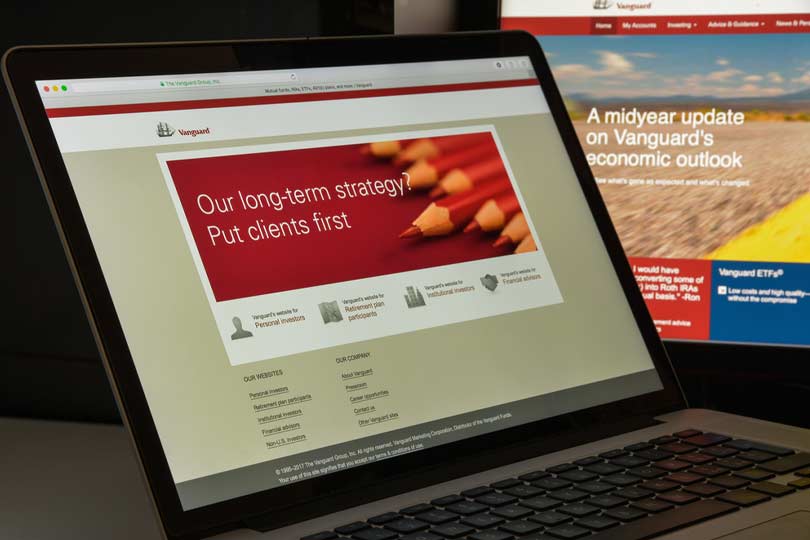While searching across the financial services industry, one name that you’ll no doubt have heard is Vanguard, and what better reason for me to write a complete guide to Vanguard funds.
So, who is Vanguard? What makes them different from any other investment platform, and why might they present a good choice for your investing?
Vanguard is one of the best investment platforms companies in the world, having created some of the most innovative investment funds for the average investor.
Read on to find out more about Vanguard index funds.
Vanguard Funds plc FTSE Emerging Markets UCITS ETF USD(GBP)
This fund seeks to track the performance of the FTSE Emerging Index.
Available via Hargreaves Lansdown
How to buy Vanguard funds
Buying Vanguard funds is simple and straightforward.
The easiest way to buy Vanguard funds is to open an account with Vanguard and invest in their funds directly with them on their website.
With Vanguard, you can open a variety of accounts, including a general investment account, an ISA, and a personal pension.
Then you can simply choose the fund that most suits your aims.
Whether you want to see growth on your money with a riskier, equity-based fund, or simply target steady returns with a blended index fund, Vanguard funds offer a great range to suit the goals and risk tolerance of any investor.
If you’re not sure which fund is most suitable for you, consider speaking to an investment advisor. They’ll be able to design an investment strategy for you that works for you in your personal circumstances.
Minimum investment amounts
Vanguard does have rules over minimum investment amounts. If you make a single purchase, your minimum investment must be £500.
For regular monthly payments, your minimum investment can be just £100 per month.
Buying through different brokers
It’s also possible to purchase Vanguard funds through other investment platforms.
Most DIY platforms offer Vanguard funds, including IG, Hargreaves Lansdown, Fidelity, Interactive Investor, and Freetrade all allow you to buy via their platforms.
Of course, fees will vary depending on who you decide to invest with. These platforms may also have different minimum deposit amounts and rules about withdrawals.
Best investing platforms to buy Vanguard funds
The following list of investment platforms allow you to purchase Vanguard index funds like Vanguard ETFs.
| Rank | Platform | At a Glance | Visit Platform |
|---|---|---|---|
| 1 | 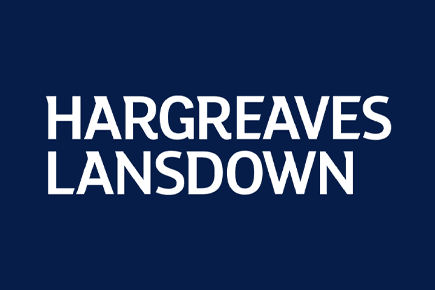 |
Hargreaves Lansdown – Lowest cost per trade: £5 – Platform fee: £0 – Vanguard Funds can be held in your Trading Account, ISA, JISA or SIPP |
Visit Site |
| 2 | 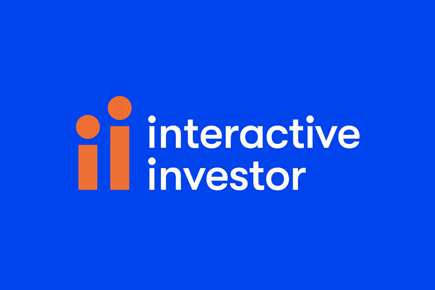 |
Interactive Investor – Lowest cost per trade: £7.99 – Platform fee: £9.99 per month (includes monthly free trade and free regular investing top-ups) – Vanguard Funds can be held in your Trading Account, ISA, JISA or SIPP |
Visit Site |
| 3 | 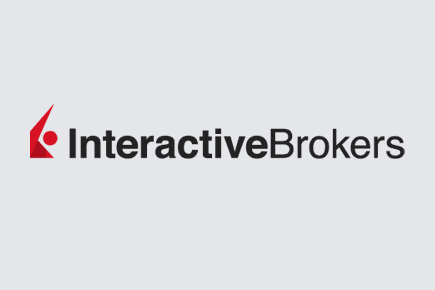 |
Interactive Brokers – Lowest cost per trade: £6.00 – Huge selection of international investments – Vanguard Funds can be held in your trading account (No ISA, JISA or SIPP available) |
Visit Site |
| 4 | 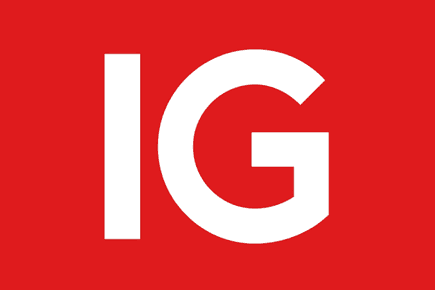 |
IG Investments – Lowest cost per trade: £3 – Platform fee: £24 quarterly – Vanguard Funds can be held in your Trading Account or ISA (no JISA or SIPP available) |
Visit Site |
| 5 | 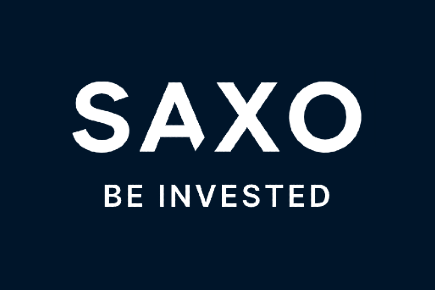 |
Saxo Markets – Lowest cost per trade: £8 – Platform fee: £0 – Vanguard Funds can be held in your Trading Account, ISA of SIPP (no JISA available) |
Visit Site |
Should I buy index funds or active funds?
Overall, the decision on whether to choose an actively managed fund or an index fund comes down to your goals, attitude to risk, and how much you’re willing to pay.
Active investing can be reassuring, as you know there’s a manager keeping an eye on your investments.
There have also been instances of “star” managers who have successfully beaten market averages, producing remarkable returns for their clients.
However, as John Bogle noticed in 1975, there’s no guarantee that an active fund will outperform the average of any market index.
In fact, there are even notable cases of “star” managers whose funds ultimately fail, despite strong initial performance.
That’s why it can make sense to invest directly into these indices, providing a low-cost choice that can still provide you with returns.
Ultimately, you need to make the decision that suits you, your financial plan, and your own portfolio.
Please note: The value of your investments (and any income from them) can go down as well as up and you may not get back the full amount you invested.
Past performance is not a reliable indicator of future performance.
Investments should be considered over the longer term and should fit in with your overall attitude to risk and financial circumstances.
A brief history of Vanguard
Vanguard is one of the biggest investment management companies in the world.
The company was founded by John “Jack” Bogle in 1975, in Malvern, Pennsylvania, USA.
Bogle was an economics and investment major from Princeton University, with a particular focus of study on the mutual fund industry.
After graduating, he secured a position at Wellington Fund, one of the oldest mutual funds in the US.
However, Bogle noticed a trend in his time there. He realised how many actively managed funds fail when trying to provide the same average returns as the major stock market indices, such as the S&P 500 in the US, or the FTSE 100 in the UK.
The “father” of the index fund
This realisation gave birth to an entire investment strategy: passive investing in funds that do nothing more than match the average market performance of an index by investing directly in it.
So, in 1975, he created Vanguard Asset Management, his own investment management firm.
Bogle’s investment philosophy was simple: steady investing is the best way to see a return on your money. He believed investors’ money primarily belonged to them, baulking at the high costs that fund managers applied for their work.
In 1976, Vanguard launched the world’s first index fund, an early precursor to the Vanguard 500 Index Fund. To this day, the fund uses the S&P 500 as its underlying index to determine the investments it targets.
Through Vanguard, Jack Bogle is now known as the father of the index fund. In 1999, Fortune magazine named him as “one of the four investment giants of the 20th century” alongside Warren Buffett, Peter Lynch, and Benjamin Graham.
Vanguard: The second-largest asset manager in the world
As the internet changed the way we approach investing, Vanguard kept pace. While Bogle stepped down from his official position of CEO of Vanguard in 1996, the company is now his own investment platform very much built in his image.
After 42 years of helping individuals to make the most of their money, Vanguard launched its DIY platform for UK investors in 2017. This has allowed investors in the UK to make the most of Vanguard’s funds.
In January 2021, the Financial Times reported that Vanguard had an estimated $7 trillion of assets under management. For context, Hargreaves Lansdown and Interactive Investor, two of the biggest investment platforms in the UK, have just £120.6 billion and £55 billion of assets under management, respectively.
This figure makes Vanguard the second-largest asset manager in the world.
How do funds work?
Before looking at Vanguard’s offering of funds, it’s important to understand how funds work.
Mutual funds
A mutual fund is essentially a basket of investments that you can singularly invest into.
Rather than buying individual stocks and shares, you pool your money alongside other investors and buy a range of investments.
These funds invest in a range of different investments, including equities, commodities, government and corporate bonds, and gilts, allowing you to make a single purchase into them, rather than buying each investment individually.
You’ll then pay a fee, typically a fixed percentage, to the provider, with the rate depending on which particular fund you’ve invested in.
Mutual funds can be a good option for investors with a lower tolerance for risk, as it means your portfolio is automatically diversified by design.
This broad market exposure means if one of the investments performs poorly, the losses can be offset by gains in a company in a different industry or region. On average, having a greater variety of investments should reduce the chance of your portfolio losing value.
Actively managed funds
If a mutual fund is described as “actively managed”, that means it has a dedicated fund manager who buys and sells investments on your behalf.
This manager makes decisions on what the fund invests in based on market research, data analysis, expense ratios, and, naturally, their own investment prejudices.
However, this also means that the manager will require compensation for the work they do in managing your money.
As a result, actively managed mutual funds tend to have higher costs that reflect the work of the manager. These usually start at around 1% of your holdings in the fund.
Before Bogle’s index fund revolution, almost all available mutual funds were actively managed funds.
Index funds
Index funds are another type of mutual fund.
But, rather than selecting holdings, index funds track specific stock market indices. For example, Bogle’s original index fund tracked the S&P 500 in the US, an index that lists 500 of the US’s biggest companies.
When you invest in an index fund, you invest in the performance of every one of the companies contained in that particular stock market index.
Their performance tracks that of the index they’re designed to follow, which is why you may hear an index fund also referred to as a “tracker fund”.
Index funds are “passive” funds. This means there’s no fund manager actively buying and selling the holdings contained within the index fund.
As a result, passive funds have low fees compared to actively managed funds, usually somewhere between 0.1% and 0.9%.
Exchange-traded funds
Exchange-traded funds, or ETFs, are exactly the same as index funds. However, the difference is that they allow you to trade your holdings multiple times a day, rather than just once.
This makes Vanguard ETFs more flexible than index funds while retaining the same low-cost benefits.
However, for personal investors, this also increases the temptation to buy and sell as the market moves.
Vanguard funds
The reason Vanguard is so popular with UK investors is because of the wide range of funds available.
Currently, as of August 2021, Vanguard offers 76 different funds. You can see full details of every single fund, including costs, and asset allocation here on the Vanguard website.
They also list the approximate risk of each fund using the Synthetic Risk and Reward Indicator (SSRI) designed by the Committee of European Securities Regulators (CESR).
Each fund is ranked on this scale from one to seven. A lower ranking means lower risk, although this may mean your returns may be lower. A higher ranking means higher risk, but potentially also higher rewards.
Below, you can find an overview of the different funds that Vanguard offers.
Blended
Vanguard’s blended funds are made up of different combinations of bonds and equities.
The equity market is more volatile than bonds. As a result, the greater the percentage of equities in the funds, the greater the risk level.
As of August 2021, there are 17 different blended funds available. Of these, just one is an active fund, while the rest are Vanguard index funds, using a passive investing strategy.
These blended funds are divided into three smaller, more specific categories: Life Strategy, Target Retirement, and Global.
Life Strategy funds
Life Strategy funds are general index funds for the average investor, offering five levels of risk based on the percentage of equities held in the fund.
The costs reflect the passive strategy used in these funds, with an ongoing charge on all five funds of just 0.22%.
Target Retirement
Vanguard’s Target Retirement funds are purpose-built for retirees with a specific year in mind for retirement.
Each fund has a year in its title, which relates to the year that investors approximately plan to retire in.
For example, the most recent Target Retirement fund is for retirees looking to stop work in 2015, or around five years after this point.
Meanwhile, the most forward-looking fund is for investors looking to stop work in 2065.
The longer the outlook for the fund, the greater the balance of equities. This is because the longer outlook allows for any volatility in the stock market to balance out. Of course, this also means the funds present more risk.
Charges are slightly higher than the Life Strategy funds, with ongoing fees of 0.24%.
Global
The Global Balanced Fund is the only active fund in the blended category.
As the name suggests, the fund invests in a range of UK and international stocks, regardless of industry sector.
The fund’s manager can change the balance of the fund as necessary, but typically it has a balance of two-thirds equities, one-third bonds.
As an active fund, fees are higher than the other blended funds, charging an ongoing fee of 0.48%.
Equity
As opposed to blended funds that include bonds, Vanguard’s equity funds exclusively include 100% equities.
Of a total of 33 equity funds, four are active funds, while the remaining 29 are all index funds.
Six geographic locations
The equity funds are organised by geographical location across six categories: Europe, Global, UK, Japan, Asia-Pacific, and the USA.
Primarily, these are index funds tracking a market index located in that particular country. Risk varies depending on where you invest and which index the fund tracks.
Similarly, costs vary greatly, charging from as little as 0.06% up to 0.29%.
Among these choices, there are also three active funds: the Global Equity Fund, the Global Equity Income Fund, and the Active UK Equity Fund.
These active funds do have higher charges than the index funds, with the UK fund charging 0.45% and the two global funds both charging 0.48%.
Emerging Markets
As well as the main six locations, there’s also an Emerging Markets category in equity funds.
These funds invest in markets that are yet to be fully established as global stock markets.
As a result, they carry greater average risk, as there’s a greater likelihood of the involved companies not succeeding.
Even so, they can still be useful to some investors as this means the potential for returns is even greater. This does generally make them more suitable for advanced investors.
Three of these four funds are index funds, charging between 0.22% and 0.25%. The other is an active fund, charging 0.78%.
Fixed Income
Vanguard’s fixed income funds are the other side of the coin from equity funds, investing in 100% bonds instead.
There are 25 fixed income funds, two of which are actively managed. The rest are index funds, some of which will be Vanguard ETFs.
These cover a range of different bonds, from government bonds, corporate bonds, and investment-grade bonds.
Five geographic locations
Just like the equity funds, fixed income funds invest across a range of locations including Europe, Global, UK, Japan, and the USA.
Bonds present a lower risk to your money than equities, which is reflected in the lower risk ratings of the fixed income funds.
Charges are also typically lower than equity funds, with index funds in this category charging between 0.07% to 0.18%.
The only active fund in this category, the Global Credit Bond fund, charges 0.35%.
Emerging markets
There are also two fixed income funds investing in emerging markets.
One of these, the Emerging Markets Bond fund, is actively managed, charging fees of 0.6%.
The other is an index fund charging 0.25%.
Money Market
The Money Market section currently contains just one fund: the Sterling Short-Term Money Market fund.
This fund looks to provide liquidity to investors, producing lower returns primarily through interest, rather than investment returns.
An active fund, this low-cost option charges just 0.12%. As a result of the low-risk investments it chooses, it also has the lowest possible risk score of one.

